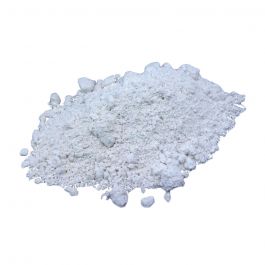- Language
- 🇺🇸
- Joined
- Mar 1, 2024
- Messages
- 343
- Reaction score
- 475
- Points
- 63
o alumínio não tornaria isso mais suspeito? então é meio óbvio que você está escondendo algo. mas eu não saberia, nunca enviei drogas pelo correio antes.
- Language
- 🇬🇧
- Joined
- Jan 19, 2024
- Messages
- 45
- Reaction score
- 31
- Points
- 18
Muitas pessoas dizem que o alumínio ajuda a bloquear os raios X, mas acho que isso é um mito
O chumbo ajuda a bloquear os raios X devido à sua densidade de 11400 kg/m³, mas o alumínio tem apenas 2700 kg/m³, portanto, acho que é inútil.
É bom apenas para embrulhar a droga.
O chumbo ajuda a bloquear os raios X devido à sua densidade de 11400 kg/m³, mas o alumínio tem apenas 2700 kg/m³, portanto, acho que é inútil.
É bom apenas para embrulhar a droga.
↑View previous replies…
- Language
- 🇺🇸
- Joined
- Jan 23, 2024
- Messages
- 112
- Reaction score
- 39
- Points
- 28
- Deals
- 12
besteira! a folha de alumínio não bloqueia os raios X.
sua droga é um amontoado de moléculas orgânicas. o aspecto orgânico é diferente do metal no raio X e pode ser distinguido.
se quiser bloquear o raio X, você deve submergir sua droga em um ambiente orgânico semelhante para parecer algo inocente. mas nesse ponto eu paro, pois não estou disposto a revelar meus próprios métodos furtivos.
sua droga é um amontoado de moléculas orgânicas. o aspecto orgânico é diferente do metal no raio X e pode ser distinguido.
se quiser bloquear o raio X, você deve submergir sua droga em um ambiente orgânico semelhante para parecer algo inocente. mas nesse ponto eu paro, pois não estou disposto a revelar meus próprios métodos furtivos.
- Language
- 🇺🇸
- Joined
- May 8, 2024
- Messages
- 49
- Reaction score
- 10
- Points
- 8
Theoretically aluminum can shield against electromagnetic waves, also x-ray.
But the thin layers used mostly are not enough.
There are different ways through which a material can block electromagnetic waves.
Scattering and absorption which often happens in high density, but it also works through the conductivity of a metal, and aluminum and copper for example have a good conductivity, and this allows them to absorb energy from the electromagnetic radiation pretty well, because of their free electrons.
But you would need a thick layer of aluminum, the normal foil is not going to do that well-
But the thin layers used mostly are not enough.
There are different ways through which a material can block electromagnetic waves.
Scattering and absorption which often happens in high density, but it also works through the conductivity of a metal, and aluminum and copper for example have a good conductivity, and this allows them to absorb energy from the electromagnetic radiation pretty well, because of their free electrons.
But you would need a thick layer of aluminum, the normal foil is not going to do that well-
- Language
- 🇺🇸
- Joined
- May 8, 2024
- Messages
- 49
- Reaction score
- 10
- Points
- 8
Also the shielding ability of aluminum is better (lot better) at lower frequencies, and thickness would need to be increased a lot to shield effectively against x-rays. Also at such high frequencies like x-ray denser materials with high Z are normally required because they have a higher probability of interacting with high energy electromagnetic waves, but theoretically every conductor can block them t some point, also aluminum, but you need a very thick layer which is not practical.

